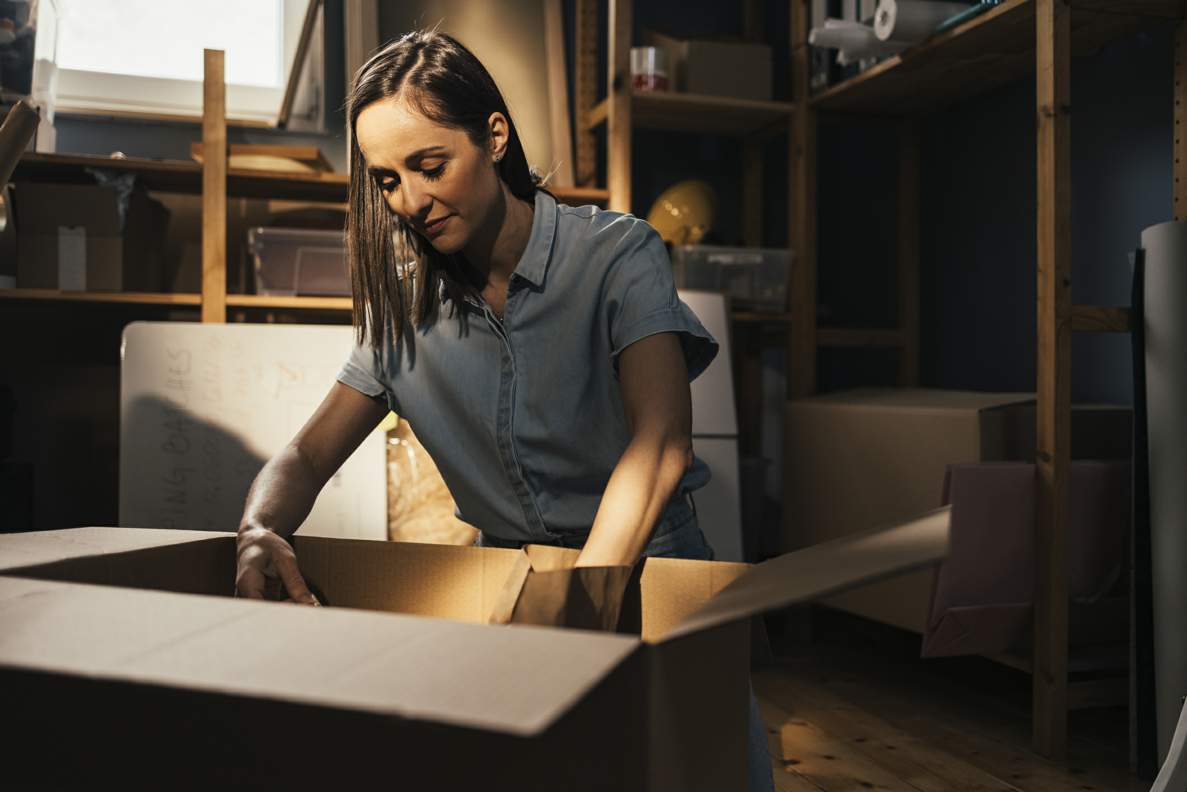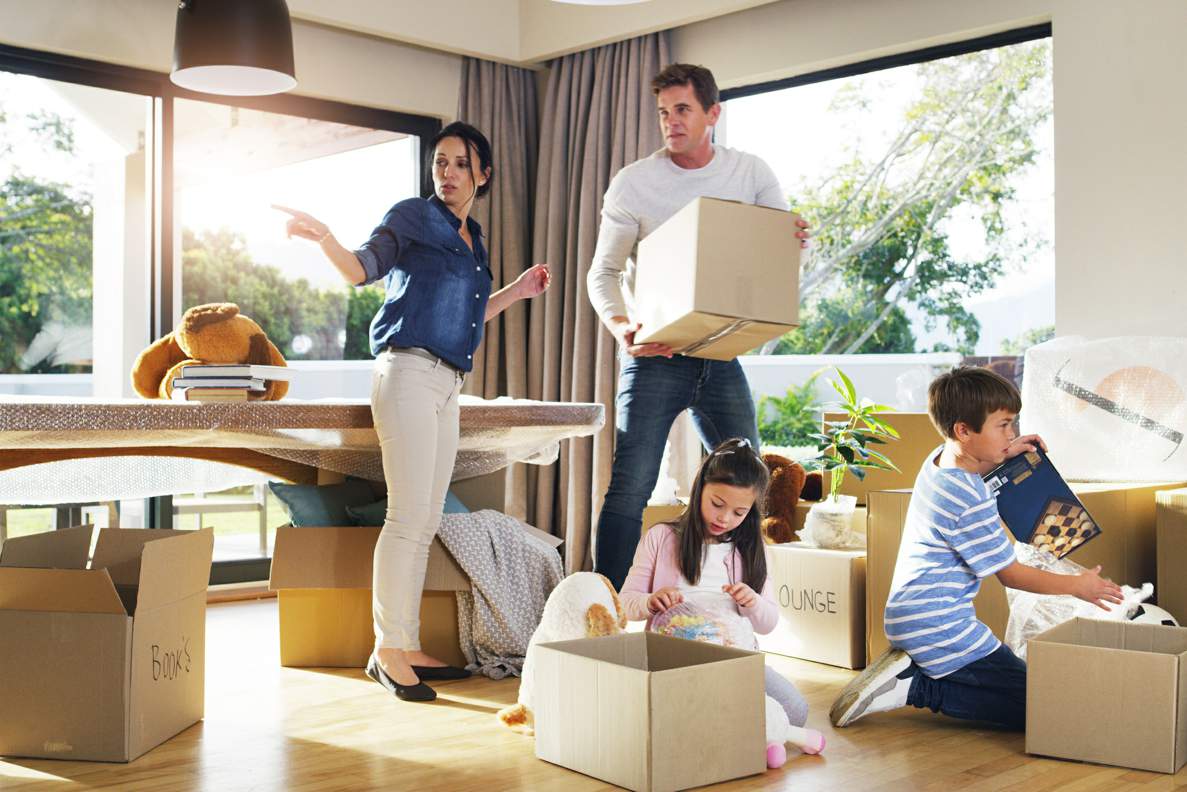Mastering the Art of a Clutter-Free Move: Essential Steps to Stay Organised
 Steps for Keeping a Clutter Free Home While Moving
Steps for Keeping a Clutter Free Home While Moving
Moving doesn't have to be a stressful, cluttered experience. It can be exciting to start fresh and create a space that truly reflects your needs and lifestyle. Clutter can significantly impact your overall well-being. By taking steps to declutter before your move, you can not only save yourself time and energy but also contribute to your sense of well-being from the very beginning. This blog will equip you with the knowledge and strategies you need to declutter effectively, stay organised throughout the process, and ultimately create a peaceful and enjoyable transition to your new home.
Preparing for a Clutter-Free Move: Managing Your Mindset

Before showing some practical steps of decluttering and organising for your move, it's essential to understand the underlying concept and mindset that will guide you through this process.
Embracing the idea of a clutter-free move involves more than just physically sorting through your belongings. It's about adopting a mindful approach to how you interact with your possessions and your living space.
First and foremost, acknowledge that letting go of items you no longer need or use doesn't diminish their value or significance. Instead, it opens up space for new opportunities and experiences in your life. This shift in perspective can alleviate the emotional attachment that often complicates decluttering decisions.
Next, it’s important to recognise that decluttering is not a one-time event but an ongoing practice. By incorporating positive habits into your daily life, you can prevent clutter from accumulating in the future and maintain a better living environment.
By donating or responsibly disposing of items you no longer need, you not only lighten your load but also reduce waste and contribute to the well-being of your community and the environment.
Approach this experience with patience, compassion, and a willingness to embrace change. With the right mindset and understanding, you lay a solid foundation for a smooth transition to your new home.
Pre-Move Decluttering: How to Start
Let's delve into the practical steps of pre-move decluttering to help you kickstart the process with confidence and clarity. We have broken it down into manageable steps that can make the process more achievable and less overwhelming. Here's how to get started:
1. Assess Your Current Situation:
Take a comprehensive inventory of your belongings, room by room. This will give you a clear understanding of what you have and what you need to address. As you assess each item, ask yourself if it serves a purpose, holds sentimental value, or enhances your life in any way.
2. Set Clear Goals:
Define what you hope to achieve through decluttering. Whether it's creating more space, simplifying your belongings, or reducing stress, having specific goals will keep you focused and motivated throughout the process.
3. Sort Methodically:
Adopt a systematic approach to sorting through your possessions. Consider using categories such as "keep," "donate," "sell," and "discard." As you make decisions about each item, be honest with yourself and let go of anything that no longer serves you.
4. Start Small:
Begin decluttering with manageable areas or items, such as a single closet, drawer, or shelf. Tackling smaller tasks first will build momentum and confidence, making it easier to tackle larger areas later on.
5. Be Mindful of Sentimental Items:
Sentimental belongings can be the most challenging to declutter. While it's important to honour the memories associated with these items, consider whether they align with your current lifestyle and space constraints. Take photos or create digital mementos to preserve memories without keeping physical clutter.
6. Establish a Timeline:
Set a realistic timeline for completing your pre-move decluttering efforts. Breaking the process into smaller tasks and scheduling dedicated decluttering sessions can help you stay on track and avoid procrastination.
7. Enlist Support:
Decluttering can be a solitary or shared experience. Consider involving family members or friends who can provide support, encouragement, and accountability. Alternatively, hiring a professional organiser or decluttering service can offer expertise and assistance if needed.
Organisational Strategies for Packing: Tips and Techniques

Once you've decluttered and organized your belongings, the next step in achieving a clutter-free move is to pack efficiently and effectively. Organisational strategies for packing can make a significant difference in saving time, space, and sanity during the moving process. Here are some tips and techniques to help you stay organised:
1. Gather Packing Supplies:
Before you begin packing, gather all the necessary supplies, including boxes, packing tape, bubble wrap, packing paper, markers, and labels. Having everything you need on hand will help streamline the packing process and prevent unnecessary interruptions.
2. Create a Packing Plan:
Develop a packing plan that outlines which rooms or areas you'll tackle first and the order in which you'll pack them. Start with non-essential items and gradually work your way towards essentials to minimise disruption to your daily routine leading up to the move.
3. Pack by Room:
To maintain general organisation and avoid confusion, pack one room at a time. Label each box with the name of the room it belongs to and a brief description of its contents. This will not only make it easier to unpack at your new home but also help movers or helpers know where to place each box.
4. Use a Colour-Coding System:
Implement a colour-coding system to visually differentiate boxes belonging to different rooms or categories. Assign a specific colour to each room and mark the corresponding boxes with coloured labels or tape. This method can streamline the unpacking process and reduce the likelihood of misplaced items.
5. Pack Strategically:
Pack items strategically, starting with heavier or bulkier items at the bottom of boxes and lighter, more fragile items on top. Use cushioning materials such as bubble wrap or packing paper to protect delicate items during transit. Fill empty spaces in boxes with packing material to prevent shifting and damage.
6. Keep Essentials Separate:
Pack a separate box or suitcase containing essential items you'll need immediately upon arrival at your new home. This may include toiletries, medications, a change of clothes, important documents, and basic kitchen supplies. Keep this box easily accessible during the move to avoid unnecessary stress.
7. Label Clearly:
Clearly label each box with its contents and destination room using waterproof markers or adhesive labels. Include any special handling instructions for fragile or valuable items.
Managing Moving Day Clutter: Keeping Things Organised
Moving day can be hectic, with boxes, furniture, and belongings in constant motion. However, with careful planning and organisation, you can keep the chaos to a minimum. Here are some tips for managing moving day clutter effectively:
1. Create a Clear Pathway:
Before the moving truck arrives, clear pathways both inside and outside your home to facilitate the loading process. Remove any obstacles, such as furniture or decorations, that could impede the movers' access to your belongings. This will help with the moving process and minimise the risk of accidents or damage.
2. Designate a Staging Area:
Designate a specific area in your home, such as the garage or a designated room, as a staging area for boxes and furniture awaiting loading onto the moving truck. Keep this area organised and free of clutter to prevent congestion and ensure efficient loading and unloading.
3. Coordinate with Movers:
Communicate with your moving company or helpers in advance to establish a plan for moving day. Provide clear instructions regarding which items to prioritise and any special handling requirements. Coordinate the placement of boxes and furniture in the moving truck to maximise space and minimise shifting during transit.
4. Dispose of Packing Materials:
As boxes are unpacked and furniture is assembled in your new home, promptly dispose of packing materials such as cardboard boxes, bubble wrap, and packing paper. Set up designated recycling or trash bins to collect packing materials and keep your new space clutter-free.
5. Unpack Strategically:
Prioritise unpacking essential items and setting up key living spaces, such as the kitchen, bedroom, and bathroom, first. Focus on unpacking one room at a time to maintain organisation and prevent clutter from accumulating throughout your new home.
6. Donate or Dispose of Unwanted Items:
As you unpack, set aside any items you no longer need or want. Consider donating gently used items to charity or recycling or disposing of unwanted items responsibly. This will help prevent clutter from accumulating in your new home and contribute to a smoother transition overall.
Unpacking with Purpose: Avoiding Clutter in Your New Home

While the excitement of moving into a new home may tempt you to quickly unpack and settle in, taking a thoughtful and purposeful approach to unpacking can help you avoid clutter and maintain organisation from the start. Here are some strategies to unpack with purpose:
1. Start with Essentials: Begin by unpacking essential items that you'll need immediately, such as bedding, toiletries, kitchen essentials, and clothing.
2. Stick to One Room at a Time: Focus on unpacking one room at a time to maintain organisation and prevent clutter from spreading throughout your home.
3. Assess Each Item: Carefully assess each item as you unpack, considering whether it serves a purpose, fits your current lifestyle, and aligns with your vision for the space.
4. Create Designated Storage Areas: Establish designated storage areas for specific categories of items and use storage solutions such as shelves, drawers, bins, and baskets to keep items organised and easily accessible.
5. Declutter as You Go: Take the opportunity to declutter as you unpack, setting aside any items you no longer need, want, or have space for in your new home. Consider donating or responsibly disposing of these items to prevent clutter from accumulating.
Maintaining a Clutter-Free Space: Long-Term Strategies
While decluttering and organising for a move is essential, maintaining a clutter-free space in the long term requires ongoing effort and commitment. Here are the most important strategies to help you sustain a clutter-free environment:
1. Regular Decluttering Sessions:
Schedule regular decluttering sessions to prevent the accumulation of unnecessary items over time. Set aside dedicated time intervals, whether it's monthly, quarterly, or annually, to reassess your belongings and identify items that no longer serve a purpose or bring joy. By consistently focusing on this, you can prevent clutter from building up and maintain a streamlined living space.
2. Adopt Minimalist Habits:
Embrace minimalist habits and principles to prevent clutter from entering your home in the first place. Before making new purchases, carefully consider whether the item is truly necessary and adds value to your life. Focus on quality over quantity and prioritise experiences and relationships over material possessions. By being mindful of what you bring into your home, you can reduce the likelihood of clutter accumulation and cultivate a more intentional lifestyle.
3. Establish Organisational Systems:
Implement effective organisational systems to keep your belongings neatly arranged and easily accessible. Invest in storage solutions such as shelves, bins, baskets, and drawer dividers to maximise space and minimise visual clutter. Designate specific areas for different categories of items and develop routines for maintaining order, such as daily tidying sessions or a designated "put-away" time each evening. By establishing clear organisational systems, you can prevent clutter from taking over your home.
Using Professional Services: How Chess Moving Can Help in Decluttering

Moving can be a daunting task, but with Chess Moving, it doesn't have to be. As a wholly Australian-owned and operated removalist company, We offer a comprehensive range of services to simplify your moving process. From comprehensive and transparent quotes to door-to-door tailored services, packing and unpacking, container and lift van preparation, storage facilities and custom crating design and assembly services, we have got you covered. With their experienced and friendly staff, you can trust that your move will be smooth and stress-free. Declutter and move with ease! Get a free quote from Chess Moving today and see how our expert team can help.